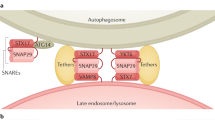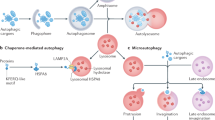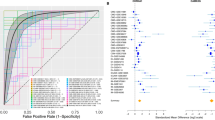Abstract
Regulated removal of proteins and organelles by autophagy–lysosome system is critical for muscle homeostasis. Excessive activation of autophagy-dependent degradation contributes to muscle atrophy and cachexia. Conversely, inhibition of autophagy causes accumulation of protein aggregates and abnormal organelles, leading to myofiber degeneration and myopathy. Defects in lysosomal function result in severe muscle disorders such as Pompe (glycogen storage disease type II (GSDII)) disease, characterized by an accumulation of autophagosomes. However, whether autophagy is detrimental or not in muscle function of Pompe patients is unclear. We studied infantile and late-onset GSDII patients and correlated impairment of autophagy with muscle wasting. We also monitored autophagy in patients who received recombinant α-glucosidase. Our data show that infantile and late-onset patients have different levels of autophagic flux, accumulation of p62-positive protein aggregates and expression of atrophy-related genes. Although the infantile patients show impaired autophagic function, the late-onset patients display an interesting correlation among autophagy impairment, atrophy and disease progression. Moreover, reactivation of autophagy in vitro contributes to acid α-glucosidase maturation in both healthy and diseased myotubes. Together, our data suggest that autophagy protects myofibers from disease progression and atrophy in late-onset patients.
Similar content being viewed by others
Log in or create a free account to read this content
Gain free access to this article, as well as selected content from this journal and more on nature.com
or
Abbreviations
- GSDII:
-
glycogen storage disease type II
- GAA:
-
acid α-glucosidase
- p62/SQSTM1:
-
p62/sequestosome1
- FoxO:
-
forkhead box O
- Lamp2:
-
lysosomal-associated membrane protein 2
- XMEA:
-
X-linked myopathy with excessive autophagy
- V-ATPase:
-
vacuolar-type H+-ATPase
- GAA-KO:
-
acid α-glucosidase-knockout
- PGC1α:
-
peroxisome proliferator-activated receptor γ coactivator 1-α
- ERT:
-
enzyme replacement therapy
- LC3:
-
microtubule-associated protein 1 light chain 3
- LC3II:
-
microtubule-associated protein 1 light chain 3 β
- CSA:
-
cross-sectional area
- BECN1:
-
Beclin 1
- Bnip3:
-
Bcl-2/adenovirus E1B 19 kDa interacting protein 3
- MuRF1:
-
muscle-specific RING finger protein 1
- M6P:
-
mannose-6-phosphate
- mTOR:
-
mammalian target of rapamycin
- NFκB:
-
nuclear factor κ-light-chain-enhancer of activated B cells
- NRF2:
-
nuclear factor (erythroid-derived 2)-like 2
- PKC:
-
protein kinase C
- GAPDH:
-
glyceraldehyde 3-phosphate dehydrogenase
- H&E:
-
hematoxylin and eosin stain
- IF:
-
immunofluorescence
- PAS:
-
periodic acid-Schiff
- Cav3:
-
caveolin-3
- HBSS:
-
Hank’s-balanced salt solution
References
Mizushima N, Levine B, Cuervo AM, Klionsky DJ . Autophagy fights disease through cellular self-digestion. Nature 2008; 451: 1069–1075.
Mammucari C, Milan G, Romanello V, Masiero E, Rudolf R, Del Piccolo P et al. FoxO3 controls autophagy in skeletal muscle in vivo. Cell Metab 2007; 6: 458–471.
Engel AG, Hirschhorn R, Huie ML . Acid maltase deficiency In: Engel AG, Franzini-Armstrong C (eds). Myology. McGraw-Hill Press: New York, 2004 pp 1559–1586.
Nishino I, Fu J, Tanji K, Yamada T, Shimojo S, Koori T et al. Primary LAMP-2 deficiency causes X-linked vacuolar cardiomyopathy and myopathy (Danon disease). Nature 2000; 406: 906–910.
Kalimo H, Savontaus ML, Lang H, Paljärvi L, Sonninen V, Dean PB et al. X-linked myopathy with excessive autophagy: a new hereditary muscle disease. Ann Neurol 1988; 23: 258–265.
Ramachandran N, Munteanu I, Wang P, Aubourg P, Rilstone JJ, Israelian N et al. VMA21 deficiency causes an autophagic myopathy by compromising V-ATPase activity and lysosomal acidification. Cell 2009; 137: 235–246.
Stauber WT, Hedge AM, Trout JJ, Schottelius BA . Inhibition of lysosomal function in red and white skeletal muscles by chloroquine. Exp Neurol 1981; 71: 295–306.
Raben N, Takikita S, Pittis MG, Bembi B, Marie SK, Roberts A et al. Deconstructing Pompe disease by analyzing single muscle fibers: to see a world in a grain of sand. Autophagy 2007; 3: 546–552.
Raben N, Baum R, Schreiner C, Takikita S, Mizushima N, Ralston E et al. When more is less: excess and deficiency of autophagy coexist in skeletal muscle in Pompe disease. Autophagy 2009; 5: 111–113.
Raben N, Schreiner C, Baum R, Takikita S, Xu S, Xie T et al. Suppression of autophagy permits successful enzyme replacement therapy in a lysosomal storage disorder-murine Pompe disease. Autophagy 2010; 6: 1078–1089.
Raben N, Hill V, Shea L, Takikita S, Baum R, Mizushima N et al. Suppression of autophagy in skeletal muscle uncovers the accumulation of ubiquitinated proteins and their potential role in muscle damage in Pompe disease. Hum Mol Genet 2008; 17: 3897–3908.
Masiero E, Agatea L, Mammucari C, Blaauw B, Loro E, Komatsu M et al. Autophagy is required to maintain muscle mass. Cell Metab 2009; 10: 507–515.
Lecker SH, Jagoe RT, Gilbert A, Gomes M, Baracos V, Bailey J et al. Multiple types of skeletal muscle atrophy involve a common program of changes in gene expression. FASEB J 2004; 18: 39–51.
Nascimbeni AC, Fanin M, Tasca E, Angelini C . Molecular pathology and enzyme processing in various phenotypes of acid maltase deficiency. Neurology 2008; 70: 617–626.
Chien YH, Lee NC, Thurberg BL, Chiang SC, Zhang XK, Keutzer J et al. Pompe disease in infants: improving the prognosis by newborn screening and early treatment. Pediatrics 2009; 124: e1116–e1125.
Takikita S, Schreiner C, Baum R, Xie T, Ralston E, Plotz PH et al. Fiber type conversion by PGC-1α activates lysosomal and autophagosomal biogenesis in both unaffected and Pompe skeletal muscle. PLoS One 2010; 5: e15239.
Salminen A, Kaarniranta K . Regulation of the aging process by autophagy. Trends Mol Med 2009; 15: 217–224.
Takikita S, Myerowitz R, Schreiner C, Baum R, Raben N, Plotz PH . The values and limits of an in vitro model of Pompe disease: the best laid schemes o' mice an' men. Autophagy 2009; 5: 729–731.
Sandri M, Sandri C, Gilbert A, Skurk C . Calabria E, Picard A et al. Foxo transcription factors induce the atrophy-related ubiquitin ligase atrogin-1 and cause skeletal muscle atrophy. Cell 2004; 117: 399–412.
Léger B, Vergani L, Sorarù G, Hespel P, Derave W, Gobelet C et al. Human skeletal muscle atrophy in amyotrophic lateral sclerosis reveals a reduction in Akt and an increase in atrogin-1. FASEB 2006; 20: 583–585.
Vandesompele J, De Preter K, Pattyn F, Poppe B, Van Roy N, De Paepe A et al. Accurate normalization of real-time quantitative RT-PCR data by geometric averaging of multiple internal control genes. Genome Biol 2002; 3 (research0034). 1–11.
Acknowledgements
We gratefully acknowledge B Dalle from Myosix for providing and culturing some of the myoblasts and Genzyme for the anti-GAA antibody. This work was supported by grants from AFM (14199) to AN, from Telethon-Italy (GTB07001-DR) and Eurobiobank network (QLRT2001-027769) to CA, from AFM (15504), from Telethon-Italy (TCP04009) and from ERC (MyoPHAGY, No: 282310) to MS.
Author information
Authors and Affiliations
Corresponding author
Ethics declarations
Competing interests
The authors declare no conflict of interest.
Additional information
Edited by E Baehrecke
Supplementary Information accompanies the paper on Cell Death and Differentiation website
Rights and permissions
About this article
Cite this article
Nascimbeni, A., Fanin, M., Masiero, E. et al. The role of autophagy in the pathogenesis of glycogen storage disease type II (GSDII). Cell Death Differ 19, 1698–1708 (2012). https://doi.org/10.1038/cdd.2012.52
Received:
Revised:
Accepted:
Published:
Issue date:
DOI: https://doi.org/10.1038/cdd.2012.52
Keywords
This article is cited by
-
Muscle diffusion MRI reveals autophagic buildup in a mouse model for Pompe disease
Scientific Reports (2023)
-
The Role of iPSC Modeling Toward Projection of Autophagy Pathway in Disease Pathogenesis: Leader or Follower
Stem Cell Reviews and Reports (2021)
-
Hepatic expression of GAA results in enhanced enzyme bioavailability in mice and non-human primates
Nature Communications (2021)
-
Deep morphological analysis of muscle biopsies from type III glycogenesis (GSDIII), debranching enzyme deficiency, revealed stereotyped vacuolar myopathy and autophagy impairment
Acta Neuropathologica Communications (2019)
-
Skeletal myopathy in Pompe disease: a failure of satellite cell activation?
Acta Neuropathologica Communications (2018)



